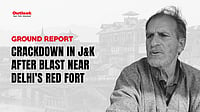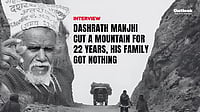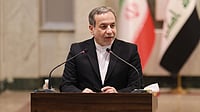No one perhaps has showcased the Indian military better than filmmaker and author Shiv Kunal Verma. He first shot into prominence in 1992 with his excellent film on 60 years of the Indian Air Force, Salt of the Earth. A series of others followed on the Indian navy and army, the military training schools, the Kargil War and then Aakash Yodha, which covered the aerial dimension of the conflict with Pakistan in 1999. Verma is also the author of The Long Road to Siachen, the Northeast Trilogy and an autobiography on V.K. Singh. A chat with ex-bureaucrat M.G. Devasahayam:
MGD: Generations brought up on stories of swarming Chinese hordes and Indian troops fighting in PT shoes to the last man, last round, will be in for a shock. Half a century after the event, how tough was it to put it all together?
SKV: Quite honestly, I think the information has always been there, it is just that no one really wanted to talk about it. Those who did write about the conflict were more concerned about exonerating themselves. It’s a great pity that not only was the truth glossed over, it was also deliberately suppressed. This was an army that was simply not allowed to fight by our own people—it wasn’t so much the Chinese who ran over us in NEFA, it was our own leadership.
MGD: The Henderson Brooks-Bhagat Report is still under wraps, at least partially. Do you think access to it would throw up any additional facts?
SKV: I don’t think so, simply because though the report was asked for by General J.N. Chaudhuri after he replaced (P.N.) Thapar as the COAS, its terms of reference were changed within a couple of days and they were asked to confine themselves entirely to IV Corps’ Operations. Later, defence minister Y.B. Chavan used it as a major sleight of hand in Parliament to deflect the blame from Nehru and his immediate advisors to the army leadership.
MGD: Neville Maxwell says Nehru was to blame for the 1962 conflict. Even our own history textbooks in schools acknowledge that Nehru’s forward policy resulted in the clash between the two Asian giants.
SKV: Buying into what Maxwell says as the gospel truth is to do a great injustice to ourselves. As Krishna Menon pointed out in 1968, India simply failed to realise that Communist China was expansionist by nature. Nehru’s failure lay in his inability to avert the clash. Before 1949, China was nowhere in the equation. The annexation of Sinkiang in 1949 first and then Tibet in 1950 changed all that. Sardar Patel read the situation perfectly and his letter to Nehru, written 38 days before he died, spelt out the changed situation at the time.
MGD: You talk of the Himmat Singh Committee that was constituted in 1951 and the General Kulwant Singh Report in 1953. They all seemed to warn Nehru.
SKV: In retrospect, who didn’t warn Nehru? General Cariappa did, Sardar Patel did, the Kulwant Singh Report even said in 1953 that there was a major likelihood of an armed clash between China and India in the next nine years. Just as the Chinese, after having annexed Tibet, were pushing forward to secure what they thought was the border, the Himmat Singh Committee did much the same, though the main focus of the recommendations was on the restructuring and deployment of the Assam Rifles. This was to lay the ground for the Forward Policy. If these boys hadn’t pushed forward into what was then wild, hostile country, just as the Chinese did in Aksai Chin, which was devoid of Indian presence, they would have emerged one fine day at the foothills. On the larger map, the Himalayas would have been the Thagla Ridge, the Brahmaputra the Nam Ka Chu and the Khasi and Garo Hills the Tsangdhar Ridge.
MGD: Exercise Lal Qila was Thorat’s brainchild. It also spelt out the situation on the ground as much as two years before the Chinese attacked.
SKV: The Thorat Plan was what one would have expec–ted of any Indian army officer who was in sound mind. But once Nehru had played the resignation card and literally destroyed Thimayya, there were no checks and balances to stop Kaul. The two men who could have brought sanity to the situation were Gens Bogey Sen and Pran Thapar. But once Nehru via Menon had begun tampering with the army’s command structure, the men on the ground were, as Thimayya put it, cannon fodder for the Chinese.
MGD: You’ve almost ignored V.K. Krishna Menon in the book. Yet, his is the first name that comes to mind when we scan the pages of history for the guilty men of 1962.
SKV: Menon was only doing what Nehru wanted him to do...he was the cat’s paw who was brought in by Nehru only when Thimayya became COAS. By then Kaul was already the man to watch within the army. Once the balloon went up and the Chinese got aggressive, Menon frankly had little to contribute. Unfortunately, our own IB files are not easily available. It would be interesting to see what role B.N. Mullick, the intelligence chief, played in building up the ‘Thimayya and the military takeover’ bogey with Nehru. It’s also quite likely that most of this was never put in writing, just as Krishna Menon ordered that no written records of all policy meetings in Army HQ be maintained.
MGD: Finally, where was the IAF in all this? In your book you virtually accuse the IB of having lied to the government in their appreciation of the PLAAF.
SKV: The report given to Nehru was a joke, but then what the hell was the air chief doing? I first heard of it from H.C. Sarin (former Defence Secretary) in 1992 when we met him in connection with our IAF film. Then Air Marshal H.C. Dewan more or less confirmed it. I still remember the shocked faces when we played the tapes from the interview in Air HQ. Sarin told us about the letter written by Nehru to Kennedy begging for US air support. He conveniently failed to mention he had drafted the letter along with the foreign secretary, M.J. Desai.


























